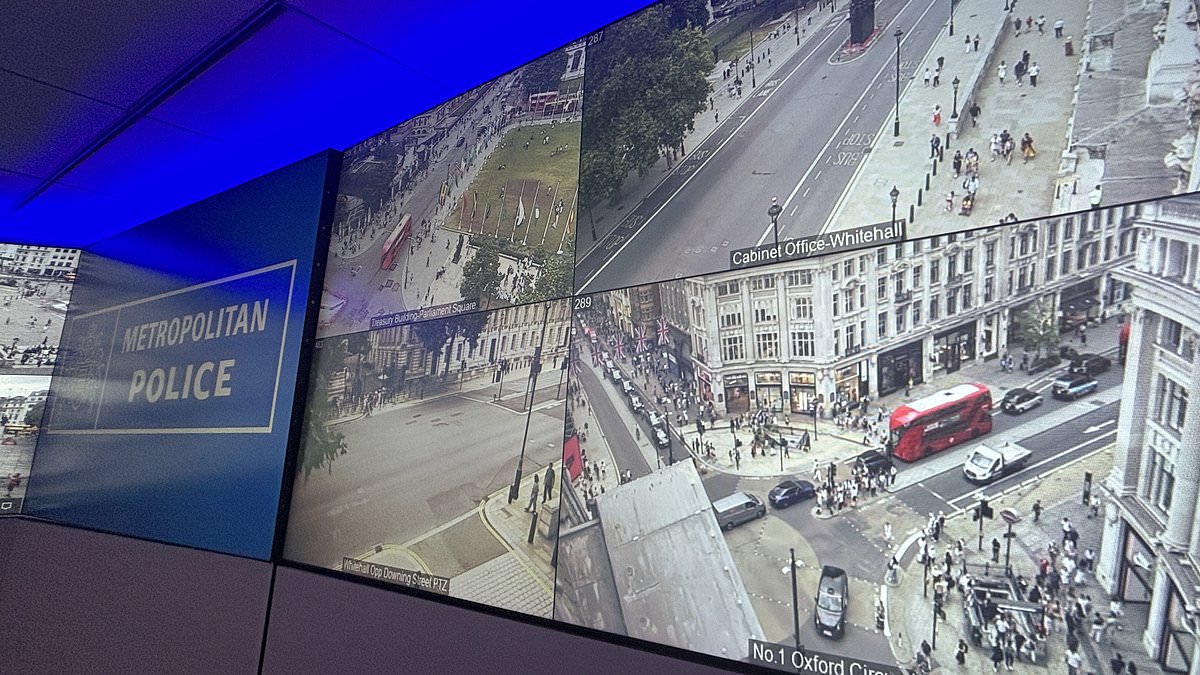Experts are creating an AI-driven crime map of England and Wales that aims to stop criminals before they strike.
The Government today announced a £4million investment in the futuristic project, which will use official data to identify local areas that are likely to see criminal activity, such as knife offences and anti-social behaviour.
Police will then target these locations with extra resources, including patrols and visits to the homes of convicted criminals, in the hope of intervening before any offences take place.
Peter Kyle, Science and Technology Secretary, said the project would draw on data from police, councils and social services, including criminal records, previous offence reports and the behavioural patterns of known offenders.
The Concentrations of Crime Data Challenge will see experts from universities and businesses tasked with creating the model with the aim of making it operational across England and Wales by 2030.
‘We want to identify areas that have a higher probability of experiencing crime,’ Mr Kyle told the Daily Mail during a visit to the Met’s central communications command centre.
‘That means police can ensure officers are in the area and are able to prevent these crimes happening in the first place or respond before they escalate.
‘The Met and other forces have an enormous amount of data on historic and emerging crime. By using that – and incorporating data from other authorities such as local councils – the model can become more accurate as time passes.’
AI can identify patterns and links in evidence and sift through data more quickly than humans.
Civil liberties campaigners have previously raised ethical concerns about the use of algorithms to try to predict crimes in advance.
But Mr Kyle said the government’s crime map would only use official data and not information from private sources, such as social media.
He insisted any interventions police make based on the map’s findings would be subject to ‘human oversight’ and insisted the system was merely an extension of traditional policing methods.
‘Police forces throughout history have always looked at individuals who are committing crime and patterns of behaviour that indicate they will commit crime again – this is not new,’ he said.
‘But in an era where we are able to use digital technology and data to assist in that process we can’t ignore the power of that technology to keep us all safe.
‘This will be one tool alongside many others that crime fighters use. Human oversight and respect for the experience of senior officers will always remain at the forefront.
‘We will not be using digital technology to blindly identify individuals on a vague probability. That is not what we are talking about.’
The initial £4m investment aims to deliver a series of initial prototypes by April 2026.
My Kyle spoke to the Daily Mail on a visit to the Met’s Central Command Communications Centre in Lambeth, where he also viewed other tech innovations including ‘first responder’ drones.
The gadgets, which will be deployed in London in October, can be sent to the scene of emergency incidents in minutes to give officers an overview of the situation and gather evidence.
The Mail also saw a demonstration of a smaller device that can be used to search buildings for hazards, such as improvised explosive devices (IEDs), before they are raided by armed police.
Mr Kyle also viewed a van fitted with facial recognition cameras, which are already used in London and are now being rolled out across seven police forces – Greater Manchester, West Yorkshire, Bedfordshire, Surrey, Sussex, Thames Valley and Hampshire.
According to officials, the technology has already been used to make 580 arrests in London over the last year, including 52 registered sex offenders.
Campaign group Big Brother Watch claimed the move ‘represents a significant expansion of the surveillance state.’
But the government maintains the technology will only be used to catch ‘high–harm’ offenders with rules to ensure ‘safeguards and oversight’.
‘What we are doing is ensuring that those people who are known perpetrators of crime are found, identified and brought to justice so they can’t commit more crimes,’ said Mr Kyle.
‘People should be reassured that we keep people’s digital information safe and secure and always act appropriately. Anyone who is not identified by these cameras has their data immediately and permanently deleted.
‘There are criminals out there using data and digital technology to commit crimes. It would be absurd to suggest we don’t use this technology to keep people safe.’
This week, the Home Office said every community across England and Wales had now been assigned a ‘named, contactable’ officer to handle reports of crimes such as anti-social behaviour.
Their details will be made available for residents on their local force’s website, it is understood.
The pledge was made as part of the Government’s previously announced Neighbourhood Policing Guarantee, under which forces have committed to respond to neighbourhood queries within 72 hours.
The Government said the move would help ensure ‘the public will have consistent direct links to their local force, with dedicated anti-social behaviour leads and new visible patrols in town centres’.
